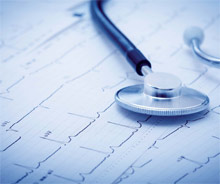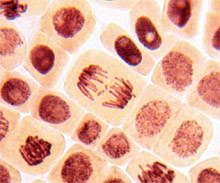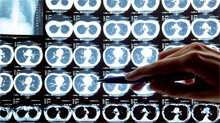You are in:
- Start
- Articles
- What is changing in risk assessment in life and health insurance?
What is changing in risk assessment in life and health insurance?PERSONAL
Ana Luisa Villanueva.
Chief Medical Officer MAPFRE RE
Madrid - Spain
Risk assessment refers to the process that allows us to assess and properly classify any adverse situation or risk to be insured to set a fair price for such coverage.
We must emphasize that, in most cases, Life and Health insurance is a long term commitment. Therefore, to avoid any imbalance, it is necessary to set homogeneous criteria to provide same solutions for similar situations and accept others that might have not been considered before.
This way we can offer a fairer and a better adjusted price to the demanded coverage.
Current market environment
The time we are going through is forcing us to reconsider consumption leading to:
- Product analysis to make them more competitive both in Price and coverage.
- A much more customized selling, paying special attention to clients’ needs and features.
In addition, we are suffering an increase in the insurance market regulations that is hitting all fields: data protection, genetic testing results and screening test for drugs and HIV, among others. The use of the equal opportunities policy to avoid discrimination has struck hard on insurance since it will not let us use certain criteria, such as sex, to differentiate risks. Age will soon be added.
Risk assessment refers to the process that allows us to assess and properly classify any adverse situation or risk to be insured to set a fair price for such coverage
All these make us look back on risk assessment and reconsider its role.
The process of risk assessment should always be aimed at meeting the actuarial balance, allowing premiums to face any possible incoming claims. To accomplish this task, premiums must best as accurate as possible through a thorough analysis of the quality of the risks.
Advances in computer technology and the introduction of telephone service and the internet as new distribution channels have generated:
- Products with smaller face amounts. Allowing boost sales and encouraging immediate purchase.
- Quick response. Both telephone and internet require a quick decision making to close sales as soon as possible. To take advantage of the purchase drive of this type of products, we need a sharp, easy, quick and an inexpensive process. The use of over-the-phone questionnaires with key questions for immediate decisions is more often found. In case the applicant does not have any disorder or impairments, the system forwards the medical information as soon as the tele-interview is finished, thus drastically reducing the response time.
- Incorporation of Computer technology. New
advances in computer technology render:
- High speed data transmission fulfilling the strict regulation on confidentiality, meanly when it comes to information related to health status.
- The use of expert systems for immediate decision making.
- Process Management by providing real time case tracking while facilitating cost management.
The traditional Risk assessment model based on a health questionnaire and some medical tests is facing new challenges resulting from scientific and technological advances and changes in life style.
Risk Assessment today
We live in a society with a wide range of services with a health policy that provides easy access to health care. It is very common to find conditions that years ago were considered severe and disabling and nowadays are well diagnosed, treated and controlled, meaning no handicap to lead a normal life in good health. In addition, our lifestyle has experienced a great change. Environment concern, changes in daily leaving habits and widespread access to health care have made life expectancy longer and improved quality of life.
New technologies are also applied to the medical field. The emergence of new diagnostic test and non-invasive tests make gathering of medical information not only easier but with a higher predictive value.
It is very common to find conditions that years ago were considered severe and disabling and nowadays are well diagnosed, treated and controlled, meaning no handicap to lead a normal life
All of this has encouraged the development of new concepts in health assessment:
- New discoveries in genetics are helping to redefine individual predisposition to certain conditions.
- The integration of evidence-based medicine brings in new experience on certain impairments resulting in a much more precise rating.
The impact of all these new concepts will soon be seen in risk assessment, both in the health questionnaire as well as in the type of medical tests.
“Are you in good health?”
The health questionnaire has lately undergone all kinds of critics and comments based on its complexity in understanding, length, completion and handling. The wording of some of the questions has generated a duality in their understanding leading to acceptance or decline of certain risks that could have had a better consideration. Even today we can still find questions such as “Are you in good health?
Such questions invite anyone suffering from a condition or therapy successfully resolved to answer positively without thinking of the cause or development of such disorder. We must not forget that as the process simplifies and eliminates important questions, the impact on price and claims rate is quite significant.
The development of Bancassurance helped process simplification and changed the traditional age / sum assured criteria. This turned into cutting down the number of questions and required medical tests. However, we do not know the real impact on claims in the upcoming years.
The widespread concern on the increase of certain disorders involving the health status of the population and the generation of more specific needs has boosted medical research both in diagnostic and therapeutic fields thus providing greater access to prognostic and diagnostic tests.
The dilemma of medical tests
The analysis of the health questionnaire takes us to work on a more efficient way to gather the information without asking for an excessive number of tests.
Even today we can still find questions such as “Are you in good health?, inside the health insurance questionnaires
Asking for attending physician’s reports may often avoid the prescription of further testing that will do nothing but increase cost. Therefore, we must develop new methods to get information either by a new more concrete and specific set of questions or through expert systems that let us choose the depth level of the information. Lab testing let us be even stricter on criteria selection. The choice of proper parameters will result in optimizing the results. The introduction of predictive, such as markers, will lead to a far more complete assessment. Glycosylated haemoglobin, for example, is an excellent parameter to control diabetes and glucose intolerance. The rating of such conditions may vary according to the results. Diabetes with an HbA1c (glycosylated haemoglobin) within normal range indicates condition under good control and will allow us giving credits to loading.
Why asking for haemostasis or clotting tests if applicant does not have any blood or liver disorder? Would it not be better to order them only when there is such a disorder? If we apply these criteria in selecting blood parameters for blood testing, we will not only decrease cost but get much more precise information resulting in setting different levels of tests according to the real health state of the applicant.
Something similar happens to the rest of the tests in risk assessment. The development in imaging is taking us to re-evaluate certain diagnostic tests, meanly in the field of cardiology. Doppler ultrasound of the heart is a non-invasive test that provides great information. It is easy to perform and inexpensive for all the information in return and yet not as popular as the stress testing, which is more expensive, uncomfortable for those undertaking the test. It may even have some contraindications depending on applicant’s underlying impairment. Heart scanning is the latest novelty. The precision of the resulting information along with the lack of contraindications represents a revolution in ischaemic heart disease. It is true that the current price of the test is out of the established cost limits but once it becomes popular, the decrease in price will give way to a more widespread use.
Prognostic tests are causing a lot of controversy these days. Advances in the field of genetics are bringing a lot of information to light on the cause of certain diseases.
What about genetics?
Knowledge of the human genome and cost reduction in genetic testing is going to let us know in advance the presence of genes causing certain disorders. The possibility of knowing such predisposition is leading to mistrust since this information is personal and could be misused in certain situations, such as risk assessment in insurance.
For this reason, regulations do not authorize to include direct questions on genetic testing. However, in the event of a present disease already declared in the health questionnaire, genetic testing may have some relevance to accept or decline the risk. The information has an important prognostic value, as in the case of the presence of genes BRCA 1 and BRCA 2 in breast cancers. Fortunately, some of these tests are prescribed on regular basis as part of the treatment protocol, giving a more real assessment of the true situation of the applicant. Note that each country may have different criteria when using the information. Further progress should be made both in science research and regulations to find a common path. Their interpretation may well be that of tumour markers, excellent for follow-up and response to treatment.
Despite the importance of genetic code, we must not forget that our life expectancy approximately accounts 30% for genetic background, 60% for our life style and 10% for environment.
The interrelationship of these concepts is scientifically supported by epigenetic or the part of science dedicated to studying modifications in gene expressions. Epigenetic is the interface of the environment and genetic, it is what explains the effect of lifestyle on genes. Cardiovascular disease is an easy example to understand. The formation of the atheromatous plaque results from a genetic sensitivity to a high-fat diet and an epigenetic pattern of gene expression that let fat become harmful. A change in our lifestyle can modify this pattern. Tobacco may cause mutations in the genes that could lead to cancer in a person with no genetic predisposition. Excessive consumption of alcohol causes a deficit in methyl groups helping gene mutation. Therefore, one of the largest sources of gene modifications lies within our lifestyle and our relationship with the environment.
We will soon have predictive markers or biomarkers to evaluate predisposition to certain disorders, which should never be read alone but in conjunction with the rest of the personal features.
Despite the importance of the genetic code, we must not forget that our life expectancy approximately accounts 30% for genetic background, 60% for our life style and 10% for environment
Wrap-up
So, risk assessment is in a changing process where:
- We will start paying more attention to individual assessment based not only on their health but on other factors such as lifestyle, physical activity, type of work and preventive actions to take care of their health.
- The introduction of new diagnostic and prognostic methods will provide us with new criteria to re-evaluate life expectancy and so the risks for rating.
- The use of expert systems will not only let us classify the different risk levels but give more intensity to the process, giving consistency to a faster and less expensive search for information.
- There is a need for more transparency from insurers in assessment criteria and reasons to decline risk to generate trust and facilitate understanding with the insured.
Risk assessment remains an essential part of the underwriting process and helps maintaining a price adjusted to the real risk of each insured. Moreover, it is closely linked to advances in medical research to keep rating updated.


 Micro-photograph of a damaged cell (in the middle). Possible origin of cancer
Micro-photograph of a damaged cell (in the middle). Possible origin of cancer
 High resolution radiological imaging
High resolution radiological imaging


